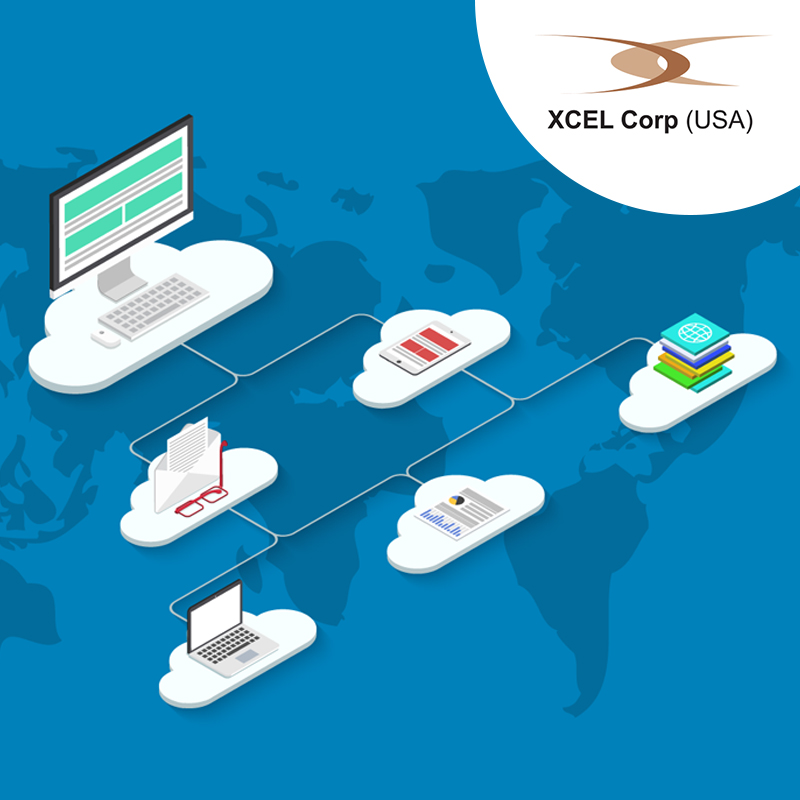Cloud…cloud technology…cloud computing…what does it mean? Cloud computing is a group of shared network resource providing services (backups and synchronization). So, one of the last computing errands to be ingested into the cloud is information analysis. Maybe this is on account of researchers are normally great at programming thus they appreciate having a machine on their work areas. Or on the other hand perhaps this is because the lab apparatus is trapped specifically to the PC to record the information. Or then again maybe this is because the data sets can be large to the point that now is the ideal time devouring to move them. Whatever the reasons, researchers and information investigators have grasped remote computing gradually, yet they are coming near. Cloud-based tools for machine learning (an app of AI that provides systems the ability to automatically enhance and learn from the experience without being openly programmed), data analysis (the process of cleansing, converting, inspecting and modelling data that helps in information gaining and supports decision-making), and artificial intelligence (AI) are developing.
As no software’s are highly protected, cloud has a disadvantage, but the interesting part is that the groups can share or open data sets to public. Well, some of the cloud providers are organizing their own data sets and storage expenses to attract users {for example: Azure, AWS, GCP and IBM). If one like, he/she can correlate the product sales with sun spots or any of the other data in these public data sets. Who knows? There are a lot of unusual correlations out there…
Azure Machine Learning
Microsoft has seen the eventual fate of machine learning and bet everything on the Machine Learning Studio, an advanced and graphical tool for discovering signals in your data. It resembles a spreadsheet for AI. There is a simplified interface for working up flowcharts for understanding your numbers. The documentation says that “no coding is essential” and this is in fact evident yet despite everything you’ll have to outlook as a developer to utilize it successfully. You just won’t get as hindered in organizing your code. But if you miss the syntax errors, the typing data, and alternate delights of programming, you can import modules written in Python, R, or a few different options.
The most fascinating choice is that Microsoft has added the infrastructure to take what you learn from the AI and transform the prescient model into a web service running in the Azure cloud.
Amazon SageMaker
You might have heard of Amazon, right? Well, Amazon made SageMaker to improve the work of utilizing its machine learning devices. Amazon SageMaker weaves together the different AWS storage choices (such as S3, Dynamo, Redshift, and so on.) and channels the data into Docker containers running the famous machine learning libraries (TensorFlow, MXNet, Chainer, and so on.). The majority of the work can be followed with Jupyter notebooks before the last models are sent as APIs of their own. SageMaker moves your data into Amazon’s machines so you can focus on considering the algorithms and not the procedure. To run the algorithms, you must download the Docker images.
Databricks
The Databricks toolset is worked by some Apache Spark developers who took the open source analytics stage and included some sensational speed upgrades, growing throughput with some cunning compression and indexing. The hybrid information store called Delta is where a lot of information can be put away and after that analysed rapidly. At the point when new data arrives, it may be collapsed into the old storage for fast re-examination.
The majority of the standardized systematic schedules from Apache Spark are prepared to keep running on this data yet with some required changes to the Spark infrastructure like coordinated notebooks for the analysis code. Well, Databricks is coordinated with both AWS and Azure and estimated by performance and utilization. Each computational engine is estimated in Databrick Units.
BigML
To say about BigML, it’s a hybrid dashboard for data analysis that can either be utilized in the BigML cloud or installed locally. The fundamental interface is a dashboard that rundowns the majority of your records sitting tight for analysis by many machine learning classifiers, clusterers, regressors, and irregular locators. The results appear when you click. Recently the organization has focused on new algorithms that improve the capacity of the stack to convey useful answers. The new fusion code can incorporate the outcomes from numerous algorithms to increase precision.
DataRobot
DataRobot flaunts the capacity to assemble many machine learning models at the same time, likewise with just a single click. Well, when the models are done, you can choose them and figure which one completes a superior job of expecting and run with that. The mystery is a “hugely parallel processing engine,” to say a cloud of machines doing the analysis.
DataRobot is growing by actualizing new algorithms and expanding current ones. Now the company gained Nutonian, whose Eureqa engine should upgrade the automated machine learning stage’s capacity to make time series and description models. Likewise the system offers a Python API for advanced users.
Google Cloud Machine Learning Engine
Google has invested vigorously in TensorFlow, one of the standard open-source libraries for discovering signals in data. Some devices in Google Cloud Machine Learning Engine are open source and basically free for any individual to download them and some are commercial choices in the Google Cloud Platform. It is like some open sources are ready to run on any Mac, Windows, or Linux box.
IBM Watson Studio
This brand was born when the concealed AI played jeopardy but now Watson envelops a bit of IBM into artificial intelligence. IBM Watson is a tool for exploring data and training models in cloud. In this cloud based version, the data goes in and chart or graphs comes out on dashboard.
CONCLUSION
“A MACHINE LEARNING MODEL FOR EVERY CLOUD”
While many are hoping to pick one dashboard for their all AI researches, here are more options to look for. Once you’ve finished data cleansing and pre-processing, you can boost the same CSV-formatted information into the services and contrast the results to find the best. As we’re far from standardization, there comes unexplained difference between algorithms. So, don’t just go on with one training method or algorithm. Demonstrate with many modelling tools to manage the best!




 Radio Frequency Information or Identification (RFID) technology recently saw its way back into the market with the advent of IoT. Before this, the wireless RFID…
Radio Frequency Information or Identification (RFID) technology recently saw its way back into the market with the advent of IoT. Before this, the wireless RFID…